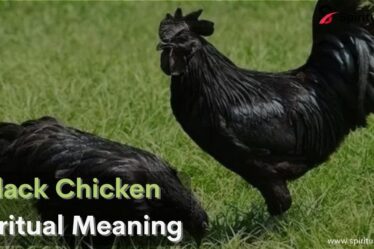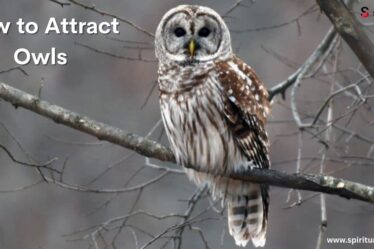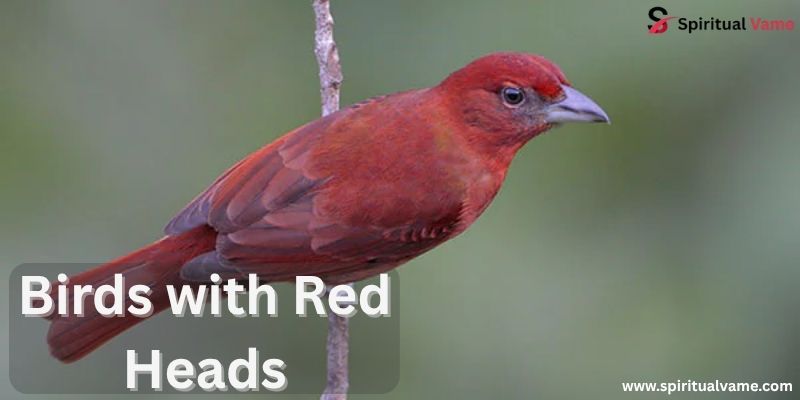
Birds with red heads are some of the most colorful and eye-catching birds in nature. Their bright red feathers make them easy to spot, whether they’re sitting in a tree or flying overhead. In this article, you’ll learn all about birds with red heads, including where they live, what they eat, and how to identify them. Some are common backyard visitors, while others live deep in forests or wetlands. You’ll also discover fun facts about their behavior and songs. Whether you’re a birdwatcher or just curious, this guide to birds with red heads will help you enjoy and recognize these beautiful creatures in the wild or your own backyard.
Red-headed Woodpecker (Melanerpes erythrocephalus)
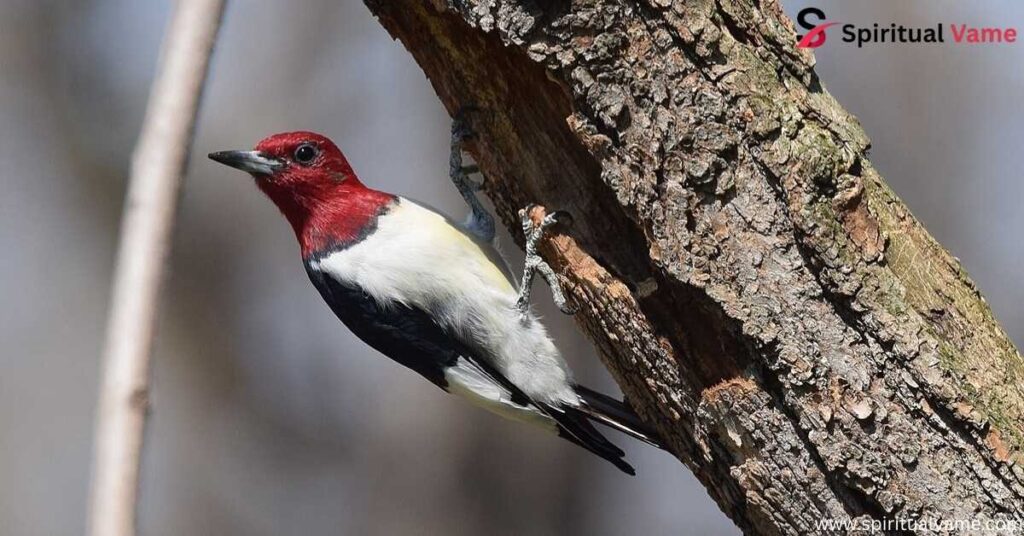
The Red-headed Woodpecker is hard to miss. Its shiny crimson head, bold black back, and bright white wings make it look like it flew out of a painting. Found in woodlands, farmland, and open areas across the eastern US, this bird prefers spaces with scattered trees and plenty of snags for nesting. It’s one of the few woodpeckers known to store food, hiding insects and seeds in tree crevices.
This woodpecker isn’t just about looks—it’s loud, agile, and territorial. Unlike other woodpeckers, it flies in a swooping, crow-like motion. The species is declining in parts of its range due to habitat loss, making conservation important. Look for it near old orchards, urban parks, and forest edges.
Downy Woodpecker
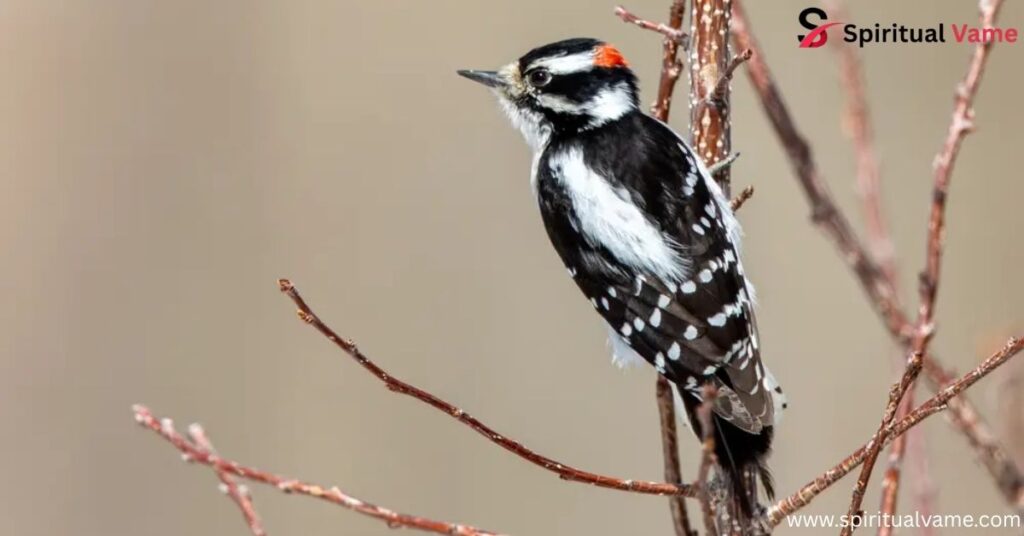
The Downy Woodpecker may be small, but its red patch on the back of the male’s head gives it away. It’s the smallest woodpecker in North America, yet it’s a common visitor to backyard feeders, gardens, and even urban neighborhoods. Males and females have similar plumage, with bold black-and-white patterns and a tiny red cap on the males.
This species feeds on insects, seeds, and berries, using its short bill to tap lightly on tree bark. Despite its size, the Downy Woodpecker has a strong presence. Its cheerful, high-pitched calls echo through rural woodlands and city parks alike, making it a favorite among spiritualvame across the US.
Acorn Woodpecker (Melanerpes formicivorus)
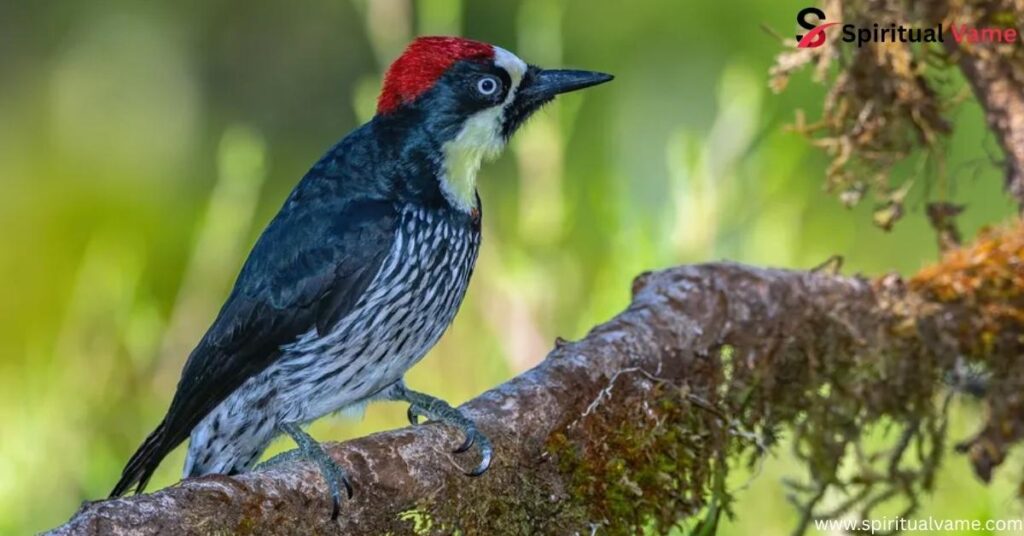
The Acorn Woodpecker looks like a cartoon bird with its clown-like face and vibrant red crown. Native to the western US, especially California, this social species lives in groups and famously stores acorns in tree trunks, fence posts, and utility poles. Each granary may hold thousands of nuts, carefully placed by the group.
These birds live in oak woodlands and mixed forests, where they eat acorns, insects, and fruits. Their unique social structure and clever storage habits make them one of the most fascinating woodpeckers in North America. You’ll often hear their nasal “waka-waka” calls before you see them.
Pileated Woodpecker (Dryocopus pileatus)
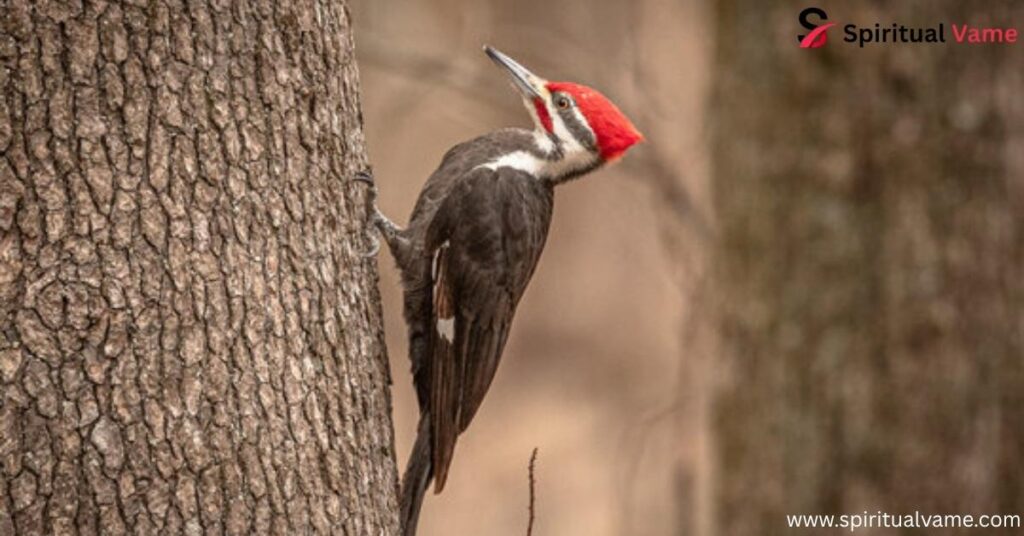
Majestic and loud, the Pileated Woodpecker boasts a flame-red crest and is nearly the size of a crow. This species carves large rectangular holes in trees in search of carpenter ants, leaving behind telltale signs for keen birding eyes. These birds prefer mature forests with lots of dead wood, especially in the eastern US and Pacific Northwest.
With a loud, rolling laugh and strong flight, they’re easy to hear but can be tough to spot. Their powerful beaks are like chisels, and watching one dig through a trunk is an unforgettable sight for birdwatching enthusiasts.
Lewis’s Woodpecker (Melanerpes lewis)
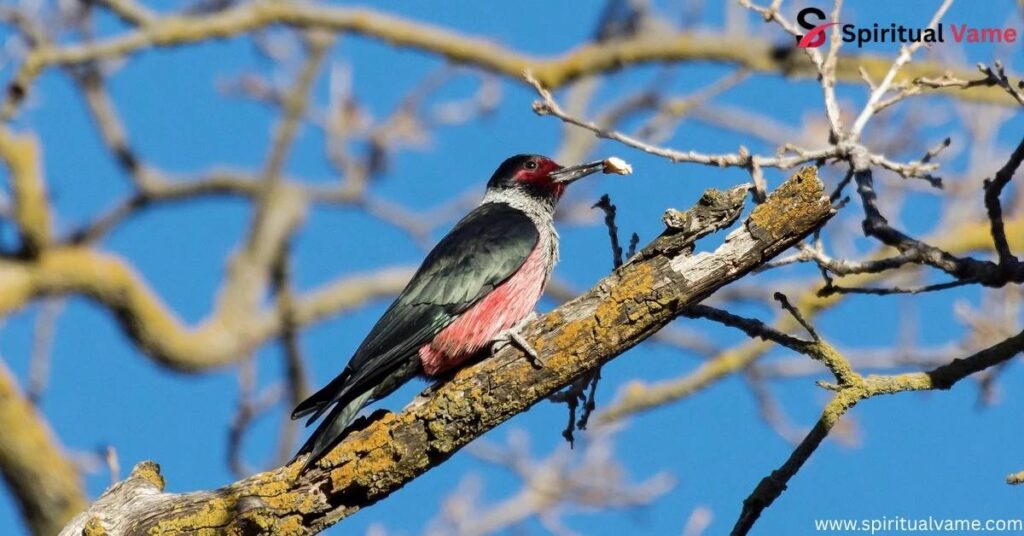
Named after explorer Meriwether Lewis, Lewis’s Woodpecker sports a red face, pink belly, and dark green back. It doesn’t behave like your typical woodpecker—this bird catches insects in midair, soaring like a flycatcher. Found in the western United States, it prefers open woodlands, especially with standing dead trees for nesting.
Lewis’s Woodpecker is quiet compared to other woodpeckers and often perches silently, so keep your eyes open when walking through pine forests or burned areas. Its population is patchy, and in some places, it’s considered rare due to shrinking habitats.
House Finch (Haemorhous mexicanus)
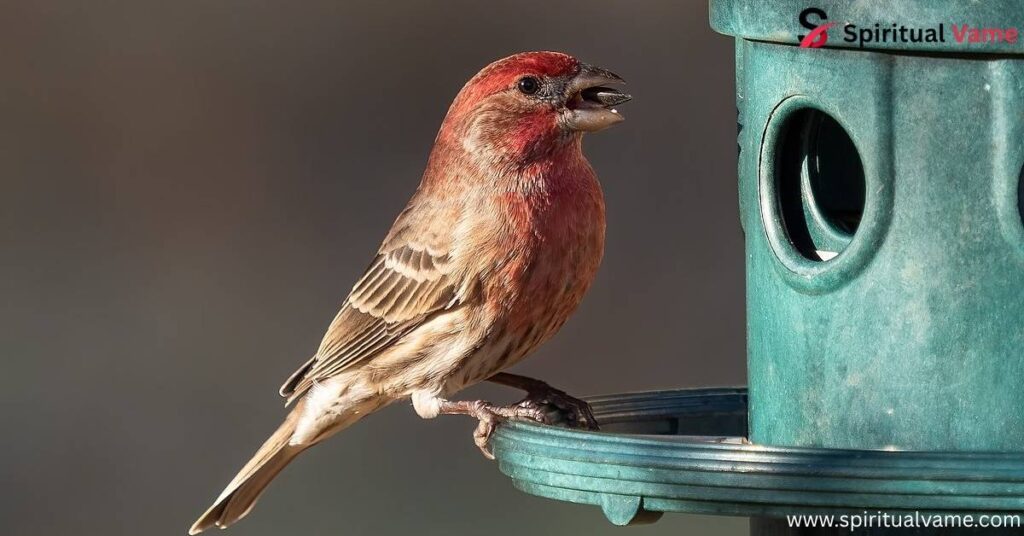
The House Finch is a familiar sight across the US. Males wear a splash of red on their heads, throats, and breasts, while females are streaky and brown. These birds thrive in urban, rural, and suburban settings and often visit feeders. They prefer seeds, but will also eat fruits and small insects.
Introduced from the Southwest, the species quickly spread across the Eastern US and now nests in hanging planters, vents, and tree branches. Their warbling songs fill spring mornings, and their bold red hues make them stand out in any crowd of songbirds.
Purple Finch (Haemorhous purpureus)

Don’t let the name fool you—the Purple Finch glows with a raspberry-red shade rather than purple. The male’s entire head and upper body are bathed in reddish tones, while females are streaked brown with bold eye markings. This finch prefers coniferous and mixed forests, especially in the Northeast US and Pacific Northwest.
They are often confused with House Finches, but with careful identification, the richer red and lack of streaking on the belly help distinguish them. Look for them during the winter at feeders stocked with black-oil sunflower seeds.
Common Redpoll (Acanthis flammea)
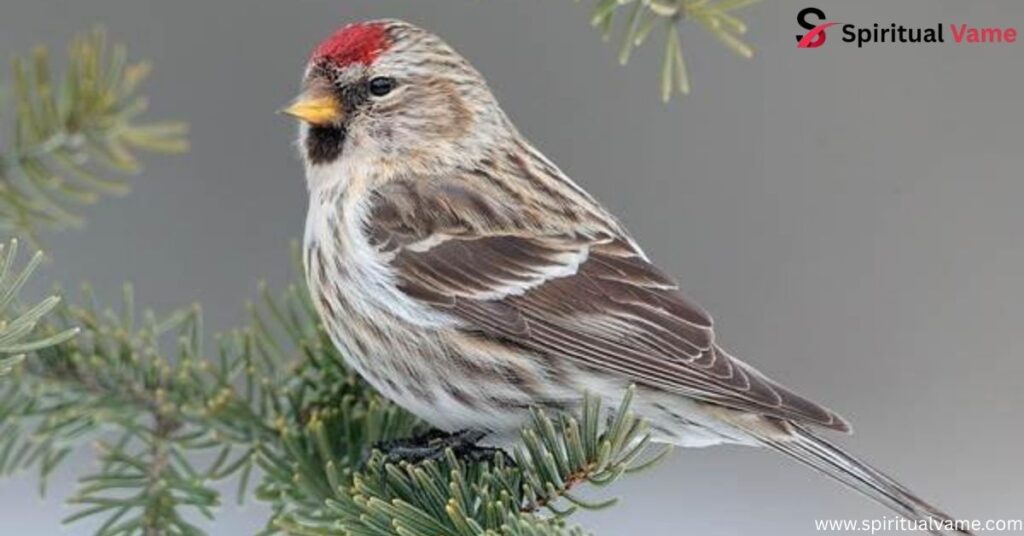
The Common Redpoll is a winter visitor from the Arctic, recognized by its red forehead, black chin, and streaked sides. This tiny finch forms large flocks during migration and is often seen foraging in weedy fields and tree tops. It survives extreme cold, thanks to its thick feathers and high-energy diet of seeds.
They’re known for traveling south in big numbers during certain winters, a phenomenon called an irruption. When they arrive, feeders become busy with their lively, chatty presence.
Cardinals and Grosbeaks
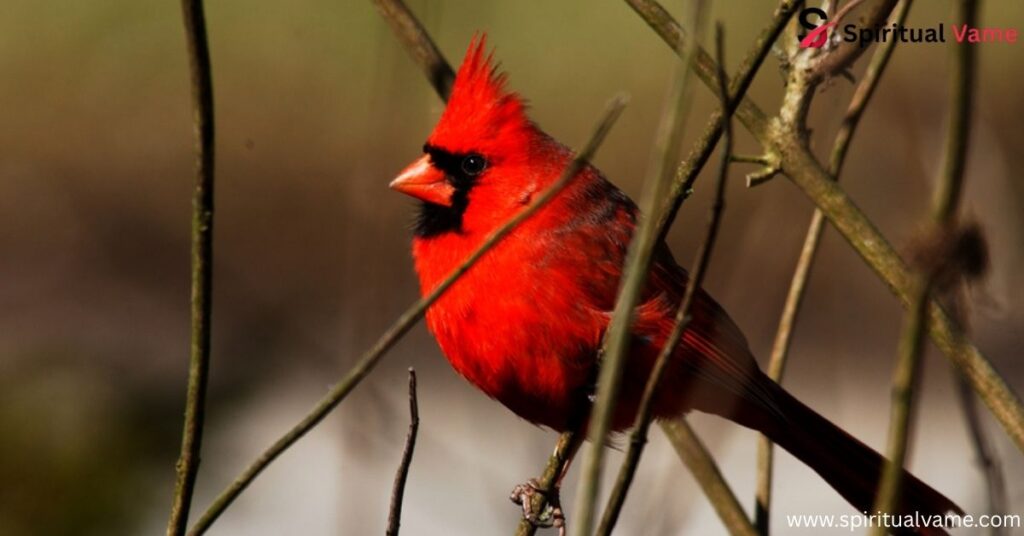
In many American backyards, the flash of red from a Northern Cardinal is a welcome sight. These birds are not only loved for their color but also for their rich, whistling songs. The cardinal family includes other stunning red-headed species like the Pine Grosbeak, Summer Tanager, and Scarlet Tanager. Each of these birds has its own distinctive red markings, though they vary widely in plumage, habitat, and behavior.
Cardinals and grosbeaks usually have thick, cone-shaped beaks, built for cracking seeds and nuts. While some are residents in warmer states, others migrate from the north during colder months. These red-headed beauties can be seen in woodlands, parks, and even neighborhood hedgerows if there’s a good food source nearby. Their striking coloration and melodious songs make them a favorite among both casual observers and serious birdwatchers.
Pine Grosbeak (Pinicola enucleator)

The Pine Grosbeak is a bulky finch-like bird with a gentle appearance. Males wear soft pinkish-red over their heads and bodies, while females are gray with hints of yellow. These birds prefer boreal forests and are mostly seen in northern states and Canada. However, during winter irruptions, they can move farther south in search of food.
Their calm nature makes them approachable, and they feed on buds, seeds, and fruit. You might find them foraging quietly in coniferous trees or even in urban areas with fruiting trees. Their slow, flute-like calls add a peaceful ambiance to snowy landscapes.
Tanagers
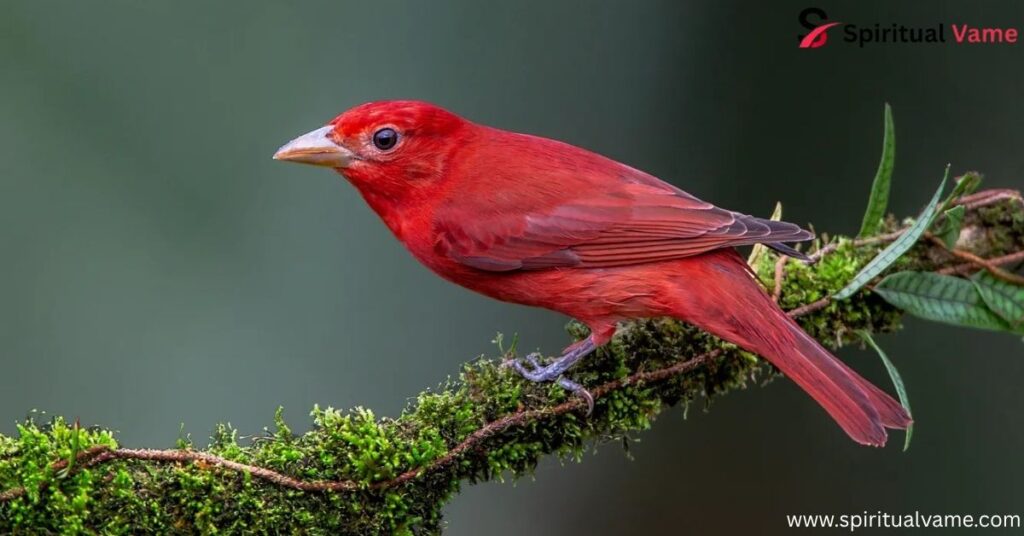
Tanagers are among the most colorful songbirds in the Americas, and several of them display brilliant red on their heads or across their bodies. These birds are not only beautiful but also fascinating in behavior and habitat choices. The Crimson-collared Tanager and Masked Crimson Tanager are two prime examples that combine vibrant red coloring with striking black contrast. They are typically found in Central America but occasionally venture north during migration.
These birds inhabit tropical forests, where they feed on fruits, insects, and nectar. Their bright plumage, often seen flashing through the trees, adds a splash of color to the dense green surroundings. Because they live in more remote or subtropical areas, birdwatchers consider them special sightings—more rare than their North American cousins but equally delightful.
Hepatic Tanager (Piranga flava)
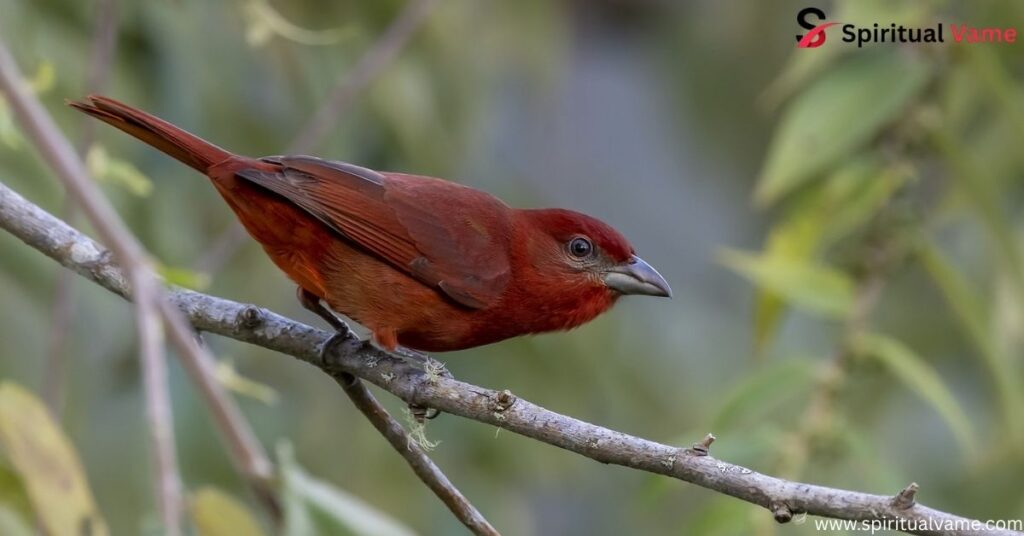
Found mostly in the Southwest, the Hepatic Tanager has a deeper, duller red on the head and body compared to its cousins. It prefers higher elevations and wooded canyons, where it forages for insects and fruits. Males are reddish-brown, while females are yellowish.
Its song is slower and softer than other tanagers, making it a bit harder to detect. Unlike other brightly colored songbirds, the Hepatic Tanager blends in well with the forested backgrounds, making sightings rare and special.
Warblers and Flycatchers
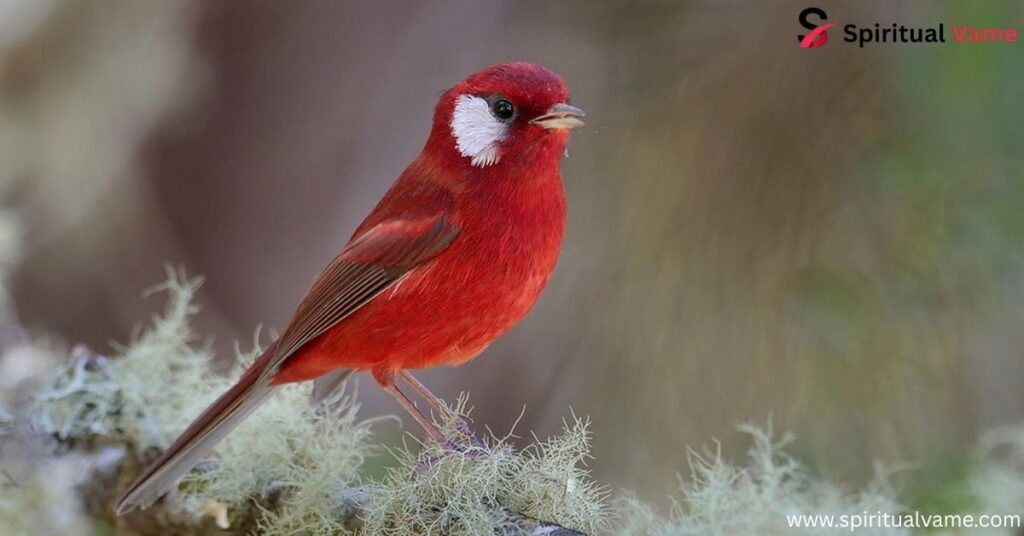
When it comes to small, agile birds, warblers and flycatchers bring beauty and action to any birdwatching experience. Though most warblers are yellow, a few special species, like the Red-faced Warbler, stand out with their crimson highlights. Flycatchers such as the Vermilion Flycatcher dazzle with their brilliant red plumage and active foraging behavior.
These birds are insect-eaters, darting from branches or hovering mid-air to snatch their meals. You’ll find them in open woodlands, scrubby areas, and near water sources, especially during spring and fall migration. They don’t stay long, so spotting one often feels like discovering a hidden treasure.
Other Species
Several other birds with red heads don’t neatly fall into any one family, but they’re no less striking. The Red-crested Cardinal, Red-capped Cardinal, and Red-headed Barbet offer bold color combinations, typically with bright red heads paired with black, white, or olive-toned bodies. These species often live in South America, but you might spot them in aviaries, extraordinary bird collections, or rare migratory events in the southern US.
Then there’s the unique Crimson Rosella, a type of parrot with fiery red and blue coloring. The Red-fronted Parakeet and Red-headed Manakin also stand out with dazzling shades and energetic movements. Whether it’s a Scarlet-headed Blackbird flitting through wetlands or a Red-headed Weaver crafting intricate nests in the trees, these birds show how diverse the red-headed bird family truly is. Their behavior, foraging techniques, and habitats vary widely, giving bird enthusiasts something new to discover every time.
The Most Common Birds with Red Heads in the UK
If you’re birdwatching in the UK or Europe, some of the most common birds with red heads might surprise you. The European Goldfinch has a brilliant red face and golden wings, often seen in gardens and hedgerows. The Great Spotted Woodpecker and European Green Woodpecker both feature red on the crown or nape, and are common in woodlands.
You might also come across a Lesser Redpoll, Linnet, or Common Pheasant—each with some variation of red on the head or neck. European Robins and Barn Swallows may not be entirely red-headed, but their reddish breast and throat areas give them a colorful appearance. These birds are regularly seen in urban and rural areas, adding charm to backyards and fields alike.
Less Common Birds with Red Heads in the UK
Some red-headed birds are harder to find in the United Kingdom, either due to their rarity or specific habitat needs. The Common Redpoll is more likely spotted in the north during winter. The Crane, Little Grebe, and Red-necked Grebe are typically seen near wetlands and lakes, while the Lesser Spotted Woodpecker keeps to quiet forests and is notoriously shy.
Pochards, especially the Red-crested Pochard, are seen in open freshwater habitats, but not in high numbers. Other elusive sightings include the Bohemian Waxwing and Waxwing, which often appear during winter irruptions from Scandinavia or Russia. These birds all offer a touch of red—on the crown, face, or crest—making them exciting finds for UK birders armed with binoculars and a bit of patience.
Conclusion
Birds with red heads bring vibrant color and fascinating diversity to landscapes across the United States, United Kingdom, and beyond. Whether it’s the familiar Northern Cardinal singing from your backyard or the elusive Masked Crimson Tanager hiding in tropical forests, each of these birds tells a unique story through its plumage, song, and behavior. Some are common residents, others are rare migrants, but all offer beauty and wonder to those who take the time to observe.
From finches and woodpeckers to flycatchers and tanagers, red-headed birds are a colorful reminder of nature’s variety. If you’re a seasoned birdwatcher or just starting out, keep your eyes open. You never know when a flash of red will brighten your day.

